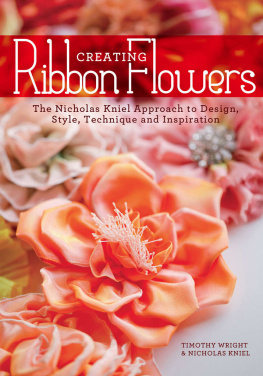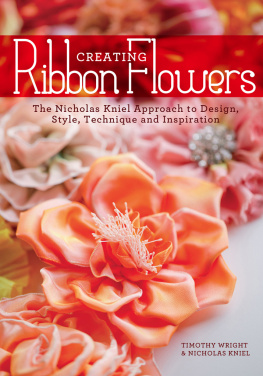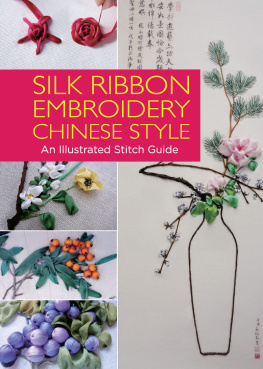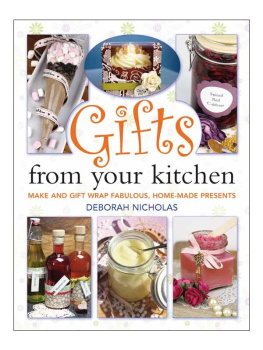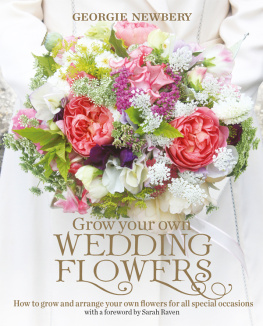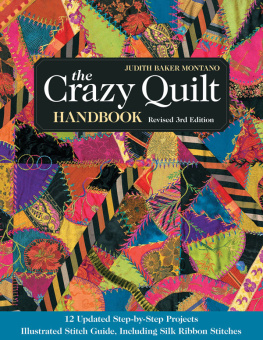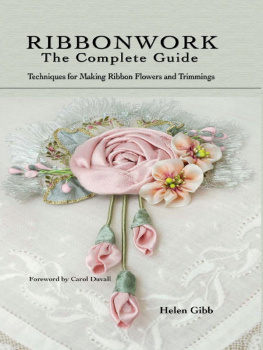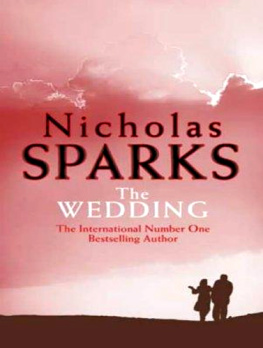Thank you for purchasing this Martha Pullen eBook.
Sign up for our newsletter and receive special offers, access to free content, and information on the latest new releases and must-have crafting resources! Plus, receive a coupon code to use on your first purchase from Store.MarthaPullen.com for signing up.
or visit us online to sign up at
http://marthapullen.com/ebook-promo
Contents
History of Ribbon Flowers & Embellishments
Ribbon embellishments as we know them reached high art in the form of dress adornment in the seventeenth and eighteenth centuries. The latter was known as the Age of Enlightenment.
During this time, science, art and politics were of great interest to the worldly and well-dressed royal court of France, which was the epicenter of European culture and the birthplace of the Salon. The royal court of France alone established the latest European fashions. Many styles bordered on the obscenely decadent at a time when many citizens of France and Europe struggled with poverty. Both mens and womens clothing were adorned with dozens of yards of handmade ribbon trims and flowers, which could usually be moved from one elaborate gown or garment to the next. This happened frequently when a garment was worn out or needed a new look. Ruched and pleated ribbons trimmed the French courts extravagant gowns, stomachers and hats, which influenced the popularity of ribbon as an adornment.
The cockade, a pleated ribbon and a staple for military uniforms, became one of the most symbolic adornments during the French Revolution. Made from tri-striped blue, white and red ribbon, cockades were worn on the bicorne hats and elegant jackets of the French military. Its use spread to other European countries and found its way into everyday fashion.
Victorians created a whole language of meaning for flowers. Lovers and admirers brought tussie-mussies of real flowers to special ladies, who in turn would decode the hidden messages in the small bouquets. In addition, most women learned needlework and were often judged on their needle skills; excellent embroidery was the sign of a proper lady. At this time, the use of ribbons and flowers in fashion was less exuberant than in the previous century. The exception, however, was the evening dress. Gowns were still lavishly adorned with ribbon around fitted bodices and voluminous skirts of silk and satin.
During the postwar 1920s and 1930s, women became professional homemakers. Handbooks for the domestic arts taught women an array of skills for the home. One of the most popular subjects was needle arts. Ribbon became a readily available and affordable embellishment, making its popularity surge once more. Before long, handbooks appeared that taught women how to make ribbon flowers and adornments.
Women could also order small handbooks out of magazines illustrating the latest ribbon accessories from Paris. Not only did these books give women ideas for their hats and clothing, but they also provided inspiration for their boudoirs and lingerie. Women could buy patterns for powder puffs, lingerie bags, eye masks, garters and other items and decorate them with ribbon work.
After a period of austerity due to World War II, ribbons again became popular for use on clothing. By the late 1940s and 1950s, ribbon flowers of all sizes were embroidered on evening gowns, jackets, shoes and handbags. Womens hats became small and compact, often adorned with little other than a simple band of fine ribbon, as in the pillbox hat.
As the first lady of the United States, Jacqueline Bouvier Kennedy brought back the cockade in the 1960s when she had one created to match her elegant day suits. She celebrated her French heritage in style with ribbon adornments.
Todays couture houses still utilize ribbon and other ribbon adornments for both evening and day wear. Ribbon is used in every conceivable manner on hats, gloves, shoes, suits, gowns and jewelry. Deconstructed fashions are not immune, as even those deliberately threadbare and worn pieces are sometimes laden with equally distressed ribbons.
The craft industry is well aware of ribbons charm. It is widely used for a variety of crafts and artisan needlework. Ribbon has moved from the fabric store to the craft store and has found its way into fine gift and specialty stationery stores.
Ribbon adorns many things for humanitys life celebrations and holidays, such as gifts on ones birthday or at Christmas, Easter baskets and diplomas, or the simple twist of colored ribbon symbolizing the fight against AIDS or breast cancer.
Throughout history, ribbons have been used to adorn, celebrate and symbolize. The variety of ribbons available today is astonishing, both in range of fibers and of design. Their use in adornment, and for decorative or practical purposes, is limited only by ones imagination.
Chapter One:
Getting Started
Supplies & Tools
Having the right tools and supplies for a project is essential for success. Here is a general list of some basic items that youll need to have on hand for the projects in this book.
Ball-Head Pins
These are useful for holding pieces in place as you work.
Cotton Balls
Some ribbon flowers have parts that require a stuffing material. You can find large bleached cotton balls at most grocery stores and drugstores.
Crinoline and Buckram
Crinoline is used as a backing for many flowers as well as for layering sections of flowers. Buckram is heavier and can be used for the same purposes. These items can be found at most fabric or craft stores.

